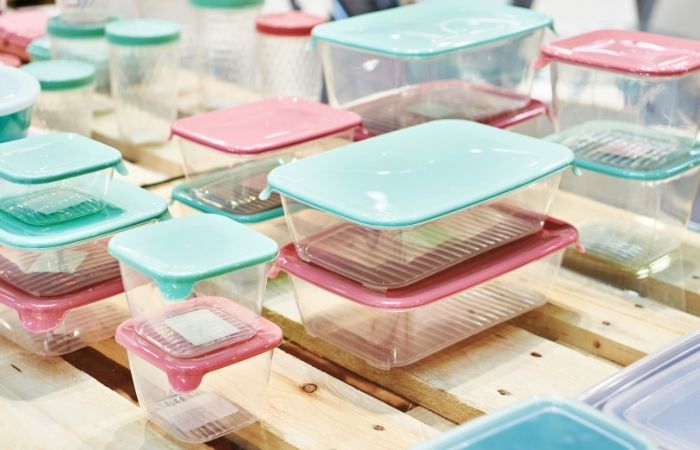Though plastic is considered one of the most harmful materials for the environment, that is not entirely true. You will be baffled after knowing how versatile plastic can be. Hydrogen, carbon, sulfur, oxygen, and nitrogen are many chemicals used to create plastics. And each of them has different properties.
When it comes to food plastic materials, we don’t only think of mother earth. We also think about our health. Many plastic injection molding companies manufacture kinds of parts with these materials. But are they safe? How would you determine safety? Let’s reveal in this article.
Table of Contents
Food Grade Plastic
When we say food-grade plastic, that means this plastic is safe enough to contain food inside. This could be any type of consumable food or drinking material. Some foods or liquids sometimes release chemicals from the plastic container. Therefore, they shall be put in the ideal container to keep them safe for health.
The Food and Drug Administration (FDA) of the US Government has passed what is called “The Food, Drug, and Cosmetic Act.” In that act, they defined any plastic materials that come close to food or used to package food should contain certain properties.
According to the FDA, when producing food related products, plastic injection molding companies should use food safe materials without any technical effect. And when they say “technical effect,” that means the container should not do any chemical reaction with the food that can change the taste or generate any harmful ingredients for health. The plastic materials used to package food should not contain any harmful ingredients that can harm the human body.
Properties of food plastic materials
FDA Approved Food Grade Plastics
So, how do you know which plastic is approved by the FDA? Well, you don’t have to be an expert to know that. There is an easy way to determine whether the plastic containing your food is okay or not. There is a code called Resin Identification Code (recycling number) to select the type of plastic having your food.
You can easily find this number on a plastic container that is made to carry food. Each container has a number surrounded by a triangle arrow. The number could be anything between 1 to 7 as these are the numbers to identify different food grade plastics.
Here are some examples
Code 1 – PET or PETE Polyethylene Terephthalate
PET means the container has excellent wear resistance capability. These plastics are very strong and come with high dimensional stability. Therefore, this plastic is highly impacting resistant and can protect your food from tough conditions.
Code 5 – PP Polypropylene
This material has a high thermal resistance, and the melting point of this material is also very high. So, if you are planning to use plastic in your dishwasher or microwave code, 5 will be an ideal choice for you.
Besides, PP does not make any reaction with detergents, base, and acids which makes it a perfect choice for household food keeping.
Code 2 – HDPE High-Density Polyethylene
This material makes the plastic container lightweight and strong. It has a high strength-to-density ratio. Also, it can protect your food from insects, rot, mold, and corrosion. So, if you are planning to keep your food outdoor or in vulnerable weather, this is an ideal choice.
Code 4 – LDPE Low-Density Polyethylene
LDPE is slightly thinner compared to other materials. You will also find this material in film applications. This is a flexible material, impact, and chemical resistant.
Code 6 – PC Polycarbonate
FDA approved Polycarbonate, but there is an ongoing debate about the safety of this material. It derives some chemicals that can create some long run issues for health. This plastic is highly stable in high temperature, impact-resistant, and has strong dimensional stability.
Characteristics of Food Grade Plastics
We have demonstrated some of the food grade plastics in the upper section. Now let’s figure out the characteristics a food grade plastic should contain:
- Excellent strength and flexural modulus
- Highly wear resistance
- Advanced dimensional stability
Most Common Food Grade Plastics
By now, you should know there are various types of food grade plastics. But manufacturers need to pick the right plastic material for their products. Here are some examples:
- Code 1 – Soft drinks, water, sports drinks, etc. They are also used for condiment bottles, for example, oil, ketchup, salad dressing, etc.
- Code 2 – Grocery bags, milk jugs, squeeze bottles, for example, chocolate syrup, vinegar, butter, etc.
- Code 3 – Sandwich bags, cling wrap, etc.
- Code 4 – Bread bags, can lids, produce bags, etc.
- Code 5 – Dairy containers, medication bottles, food storage boxes.
- Code 6 – Takeaway containers, coffee cups, trays, etc.
Conclusion
We hope this article has helped you to understand the food plastic materials. Most large brands maintain the direction of the FDA or respective authority of its country. So, if you buy food from any reputed brand, you don’t need to worry about it. But if you are buying any plastic for personal use, you should take a look at the code number. The box should have a code number on it, and you should buy one that can meet your requirements.


